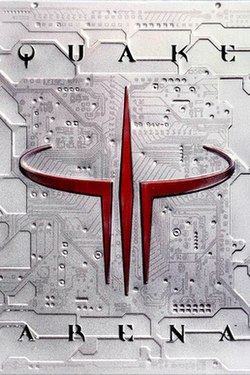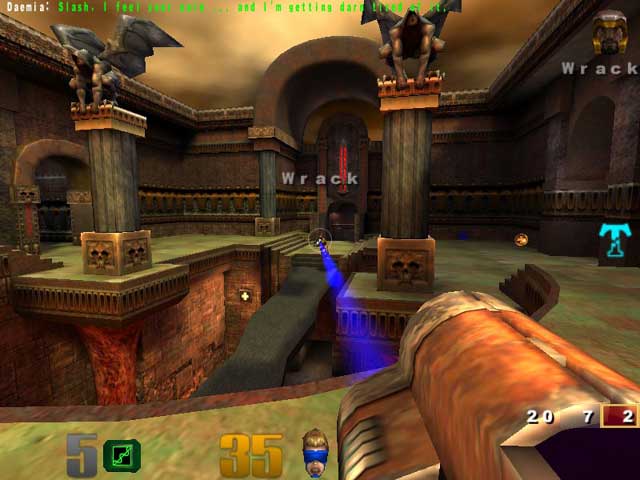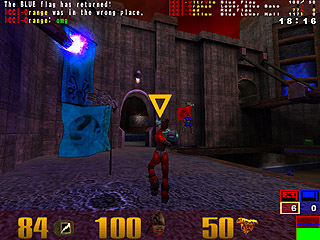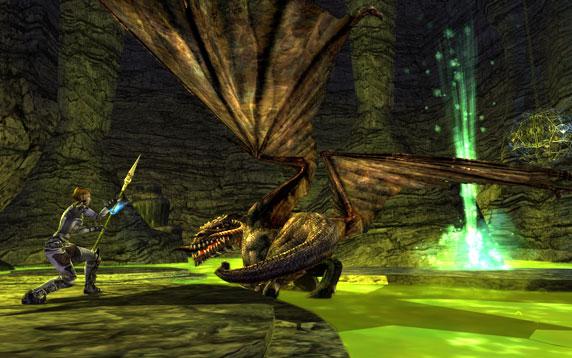Strategically out-think your opponents by capturing outposts and bases while using the terrain to gain the upper hand as you eliminate your enemies in combat.

Game Pieces
• Board Base – holds the four Base Tiles and the twelve Terrain Tiles.
• 4 Base Tiles – these are placed into the base slots on the corners of the Board Base.
• 12 Terrain Tiles – these are placed in the provided slots on the Board Base. (See “Setup”.)
• 40 Soldier Pawns - 10 of each color
• 20 Tank Pawns - 5 of each color
• 8 Missile Battery Pawns - 2 of each color
• 4 Yellow Outpost Markers – Non-moving pieces. One is placed on each outpost space.
Setup
• Each player decides chooses a color (red, black, green, or blue) and collects all pawns of that color and as well as the corresponding Base Tile.
• Each player randomly chooses three Terrain Tiles and places them in the order of their choosing in the three Terrain Slots bordering their respective Base Tile.
Place all four the Outpost Pawn pieces on the Outpost positions provided on the board. *NOTE: See the Board Layout chart below for more information
Game Play
• Players each roll one six-sided die to determine who goes first. Highest roller wins and play proceeds clockwise.
• At the beginning of a player’s turn, that player may place up to a total of up to three Pawns on any eligible spawn point(s) for the following locations:
The Player’s Home Base, as long as the player still controls it
Any other Home Base the spawning player controls
Any Outpost controlled by the spawning player
• During their turn, each player gets three “Actions”. An Action consists of a movement, an attack, or a combination of both. (For Example: Moving a Tank two spaces and then attacking with it is considered a single Action.)
*NOTE: See the Player Info and Movement and Attacking charts below for more information
• The player must determine the Pawn’s movement range from its current position using the Pawn Attributes and Terrain Attributes tables below.
• Pawns may move forwards, backwards, left and right. However, Pawns may NOT move diagonally! (See “Movement and Attacking”)
• When crossing from one terrain to another, movement modifiers are always calculated from the terrain the Pawn started on.
• Multiple Pawns cannot occupy the same space or “jump over” each other.
• Pawns must move around Outposts.
• Pawns and can only stop on an Outpost or Base if it is unoccupied.
• While the player does not have to attack during an action, any attack does signal the end of the current action.
• Missile Batteries may not move and attack on the same action.
Combat
Combat is initiated when a player, during their turn, has a Pawn within range of an enemy Pawn and proclaims an attack (See the Terrain Attributes Table for terrain attack modifiers.)
• Pawns may attack another Pawn, Outpost, or Base that is within range in any direction. (Pawns CAN attack diagonally. See “Movement and Attacking”)
• Pawns may not attack from a spawn space but they can be attacked. (If a Pawn is attacked while on a Spawn Space the defending player should roll the standard Combat Roll for that Pawn Type.)
• Missile Batteries may not move and attack on the same action. Nor can they attack targets that are less than two spaces away. They can however, defend attacks again these close range attacks.
Battle Sequence
1. The attacking player announces which enemy Pawn he/she is attacking and then rolls the specified Combat Role for his/her attacking Pawn’s Type.
2. The defending player rolls the specified Combat Role for their Pawn’s Type. (Pawns defending from an Outpost or Base always roll two, six-sided dice for defense. See “Outposts”.)
3. The attacker only wins if their roll is higher than the defender’s. A tie, or less, always goes to the defender.
4. If the attacker wins, the defender’s Pawn is permanently removed from game play. Otherwise, the attacker’s current action is over and play continues. (*Note: Attacking Pawns that lose in combat are not removed from the game board and are free to be used on the player’s next action.)
Outposts
An Outpost is a strategic location that, when occupied by a player, may be used to spawn said player’s Pawns on the board.
• There are four Outposts on the game board, one at each of the four intersections of four terrains located at equal distances between each of the Home Bases. (See “Board Layout” below)
• The four spaces an Outpost sits at the intersection of are considered one space.
• Only a Soldier Pawn can occupy an Outpost (or Base). This is done by moving a soldier pawn on the space and replacing the Outpost Pawn with Soldier Pawn.
• An occupied Outpost always has a defense roll of two six-sided dice and an attack roll of one six-sided die.
• If an Outpost is occupied, the occupying player can spawn available Pawns at the beginning of their turn in any open space bordering the occupied Outpost. (See “Board Layout” below). The spawned Pawns CAN be moved during that turn.
• If a Soldier Pawn is defeated while occupying an Outpost, the soldier pawn is removed and the Outpost Pawn is put back in its place to signify that it is unoccupied.
Bases
• The Base from which a player starts is that player’s Home Base. It is where the player spawns his or her Pawns at the beginning of the game.
• A home Base must be occupied in order to defend it. However, it does not have to be occupied by its home color to spawn from it. (Like Outposts, bases can only be occupied by Soldier Pawns).
• If a base is taken over by another player, that player must leave a Soldier Pawn on the Base for it to remain their control and use its spawn points.
• If a player’s Home Base is occupied by another player, they can no longer spawn from it. (See “Board Layout” below).
Winning and Losing the game
Players are eliminated from the game in when they have no more Pawns on the Game Board and have no way to spawn more. When only one player is left, that player is the winner. (In the event the game takes too long to come to a “natural conclusion”, players should total up all of their remaining Pawns as well as all controlled Outposts and Bases using the Asset Value Table below. The player with the highest point total wins.






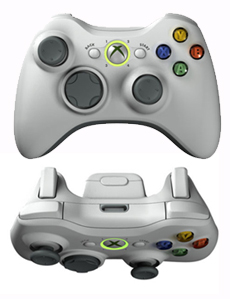 The left toe was on the left stick which controls for movement forward and backward, strafe left and strafe right. The right toe was on the right stick controlling where I was looking. After a few minutes I was able to cooridnate my feet to the point where I could walk forward and carefully turn and go around corners. However, because the mouse is so sensitive and the human foot is not conditioned for such small movements, even attempting to aim at an enemy was futile. By the time you got the recticule anywhere near where you wanted to shoot, the enemy gone or, more likely, had already killed you. Add to that the fact that in all of the controller configurations, the attack is controlled by the right trigger, which, in order to get to, I have to take my right foot off the aiming stick and turn the controller sideways to reach.
The left toe was on the left stick which controls for movement forward and backward, strafe left and strafe right. The right toe was on the right stick controlling where I was looking. After a few minutes I was able to cooridnate my feet to the point where I could walk forward and carefully turn and go around corners. However, because the mouse is so sensitive and the human foot is not conditioned for such small movements, even attempting to aim at an enemy was futile. By the time you got the recticule anywhere near where you wanted to shoot, the enemy gone or, more likely, had already killed you. Add to that the fact that in all of the controller configurations, the attack is controlled by the right trigger, which, in order to get to, I have to take my right foot off the aiming stick and turn the controller sideways to reach. Chalk is a 3rd person, 2-D, side-scroller that takes place on the surface of a chalk-board. The object is to avoid and destroy damage-dealing enemy shapes by drawing chalk lines with your mouse. If your chalk line connects all the right points, the shape blows up.
Chalk is a 3rd person, 2-D, side-scroller that takes place on the surface of a chalk-board. The object is to avoid and destroy damage-dealing enemy shapes by drawing chalk lines with your mouse. If your chalk line connects all the right points, the shape blows up.
 18 minutes later Diogenes Reynolds came to an abrupt halt in front of a large iron wrought door with names formed in large iron letters decorating it's crossbars. He caught his breath as he read to himself the names he recognized; Hippocrates, Louis Pasteur, Joseph Lister. These, he knew, were all fathers of medicine. "Healing fathers," he said to himself realizing whatever he needed must be behind the door in front of him.
18 minutes later Diogenes Reynolds came to an abrupt halt in front of a large iron wrought door with names formed in large iron letters decorating it's crossbars. He caught his breath as he read to himself the names he recognized; Hippocrates, Louis Pasteur, Joseph Lister. These, he knew, were all fathers of medicine. "Healing fathers," he said to himself realizing whatever he needed must be behind the door in front of him. He noticed a series of dusty picture frames hanging on the wall next to a door frame.
He noticed a series of dusty picture frames hanging on the wall next to a door frame. 




